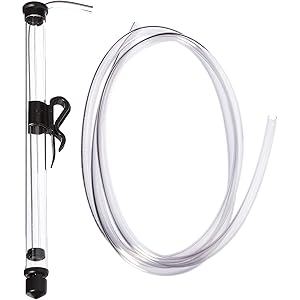Understanding Yeast Infections in Dogs’ Ears
Yeast infections in dogs’ ears are a common issue that can cause discomfort and pain for your furry friend. These infections are often caused by an overgrowth of the yeast organism Malassezia, which is normally present in small amounts on the skin and ears of dogs. Factors such as allergies, moisture, and poor ear hygiene can contribute to the proliferation of yeast, leading to symptoms like itching, redness, and a foul odor. Recognizing the signs early is crucial for effective treatment.
Identifying Symptoms of Yeast Infections
The best way to treat yeast in dogs’ ears begins with identifying the symptoms. Common signs include excessive scratching or rubbing of the ears, a strong odor emanating from the ear canal, redness or swelling in the ear, and discharge that may be brown or yellowish. If you notice these symptoms, it’s essential to consult a veterinarian for a proper diagnosis and treatment plan tailored to your dog’s specific needs.
Veterinary Diagnosis and Treatment Options
A veterinarian will typically perform a thorough examination of your dog’s ears to confirm the presence of a yeast infection. This may involve taking a sample of the ear discharge for microscopic examination. Depending on the severity of the infection, treatment options may include antifungal ear drops, medicated wipes, or oral antifungal medications. Following your vet’s recommendations is the best way to treat yeast in dogs’ ears effectively.
Home Remedies for Yeast Infections
In addition to veterinary care, some pet owners explore home remedies to complement treatment. Natural solutions such as diluted apple cider vinegar or coconut oil can be applied to the ears to help restore balance and reduce yeast growth. However, it is crucial to consult your veterinarian before trying any home remedies, as some substances may irritate the ear further or be ineffective.
Maintaining Ear Hygiene
Preventing yeast infections in dogs’ ears is often linked to proper ear hygiene. Regularly cleaning your dog’s ears with vet-approved solutions can help remove excess wax and debris that may harbor yeast. It is recommended to clean your dog’s ears at least once a month or more frequently if they are prone to infections. This proactive approach is one of the best ways to treat yeast in dogs’ ears before it becomes a problem.
Get more content like this!
Sign up to receive updates and new terms first hand.
Dietary Considerations
Diet can play a significant role in managing yeast infections in dogs. Some dogs may have food allergies that contribute to yeast overgrowth. Consulting with your veterinarian about an appropriate diet, possibly including hypoallergenic or grain-free options, can help reduce the likelihood of future infections. A balanced diet rich in omega fatty acids may also support skin health and immune function.
Environmental Factors
Environmental factors such as humidity and exposure to allergens can exacerbate yeast infections in dogs. Keeping your dog’s living area clean and dry is essential. If your dog spends a lot of time outdoors, particularly in wet conditions, ensure they are dried thoroughly afterward. Reducing exposure to known allergens can also help maintain ear health and prevent yeast overgrowth.
Monitoring and Follow-Up Care
After initiating treatment for a yeast infection, regular monitoring is vital. Keep an eye on your dog’s symptoms and follow up with your veterinarian as recommended. If symptoms persist or worsen, further evaluation may be necessary to rule out other underlying conditions. Consistent follow-up care is one of the best ways to treat yeast in dogs’ ears and ensure your pet’s comfort.
When to Seek Emergency Care
In some cases, yeast infections can lead to more severe complications if left untreated. If your dog exhibits signs of severe pain, swelling, or if the infection spreads beyond the ears, seek emergency veterinary care immediately. Prompt action can prevent further health issues and is crucial for your dog’s well-being.
Conclusion
While this section is not included, it is important to remember that the best way to treat yeast in dogs’ ears involves a combination of veterinary care, proper hygiene, and lifestyle adjustments. By staying vigilant and proactive, you can help ensure your dog remains healthy and comfortable.




